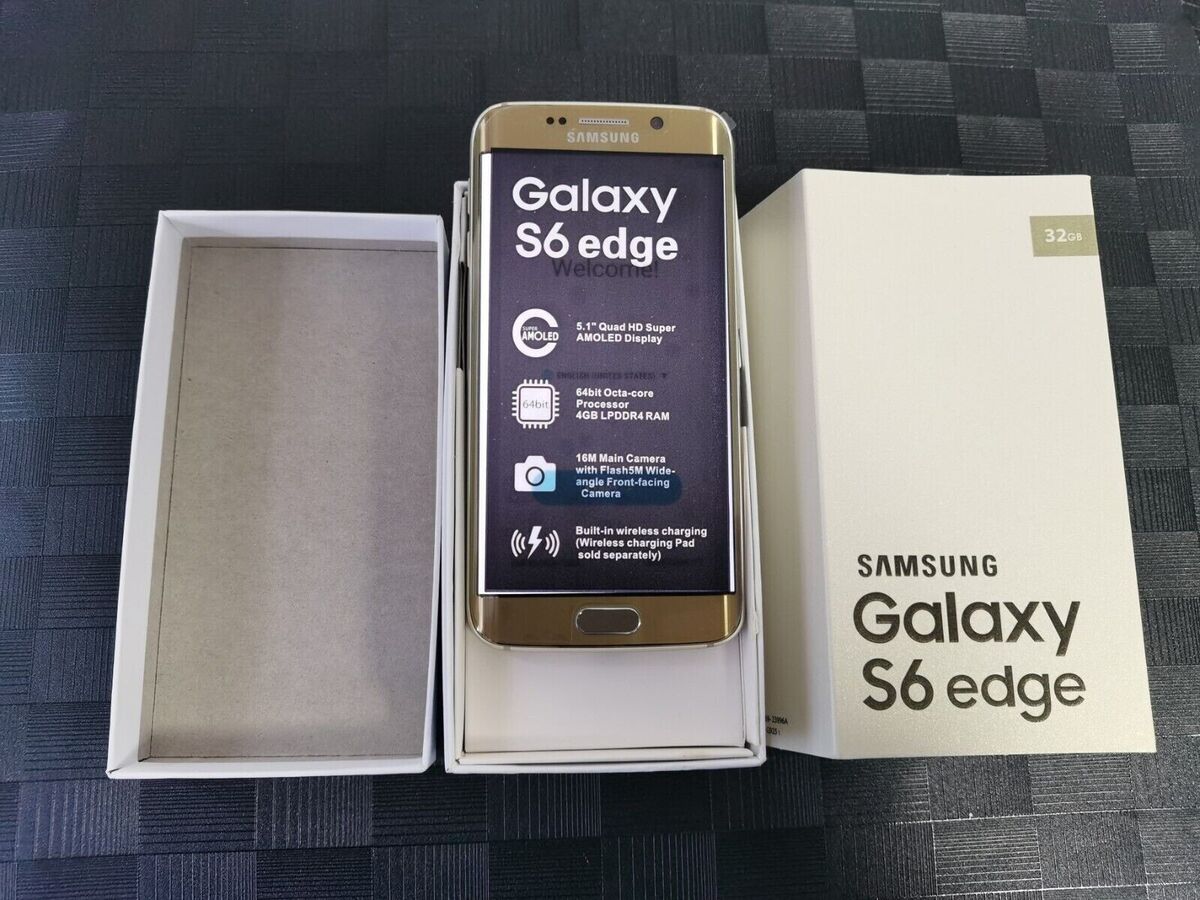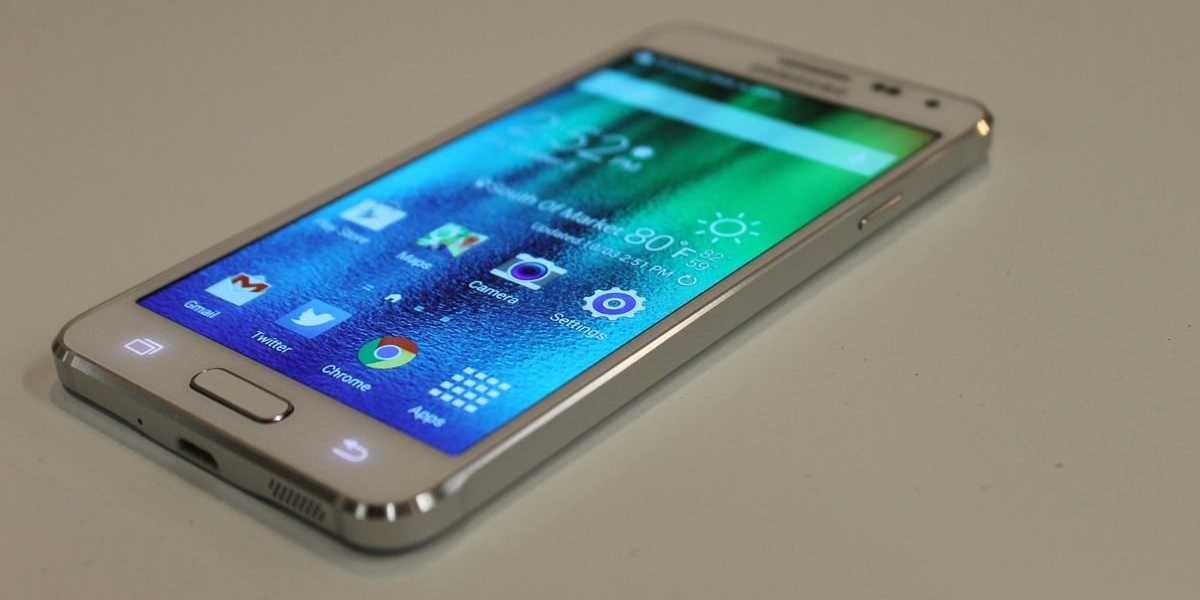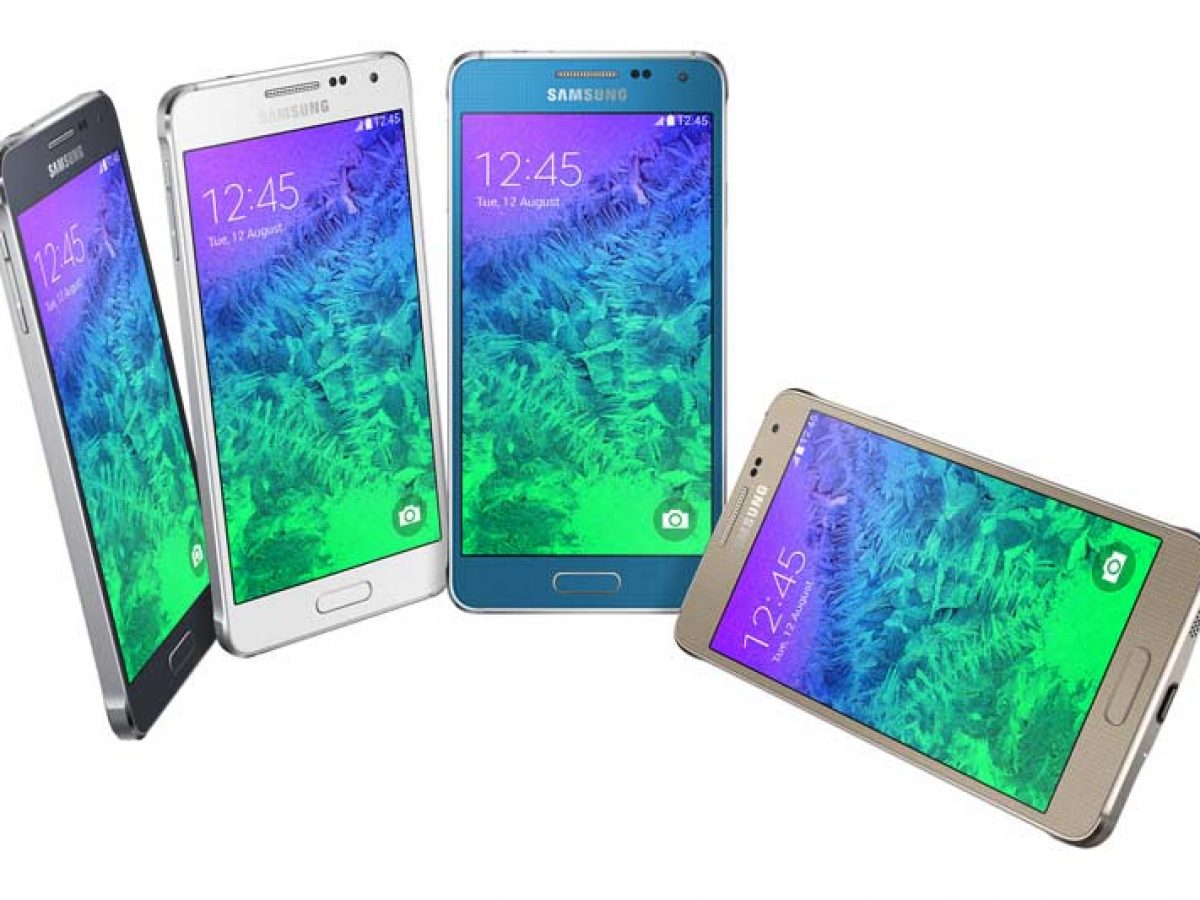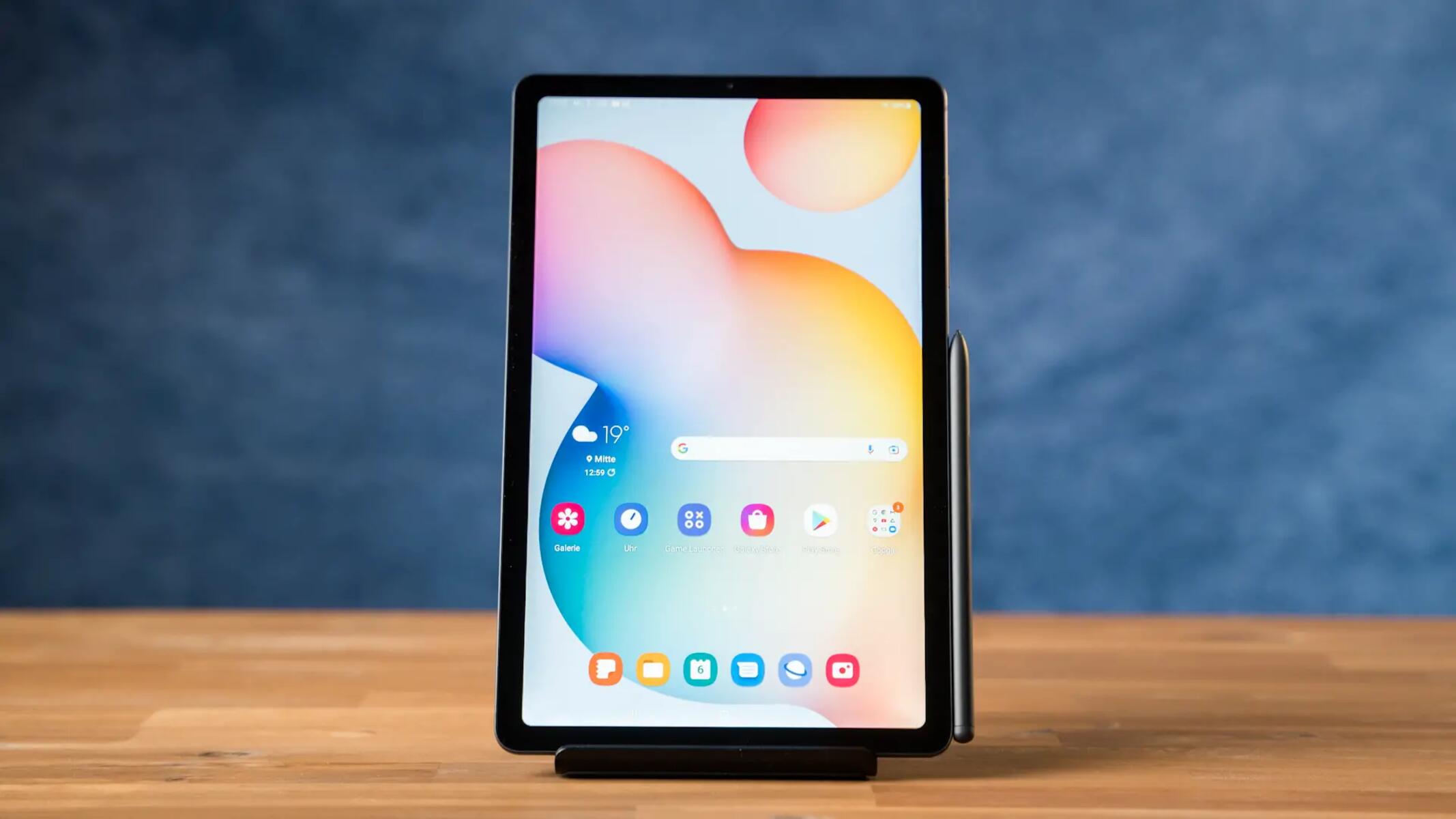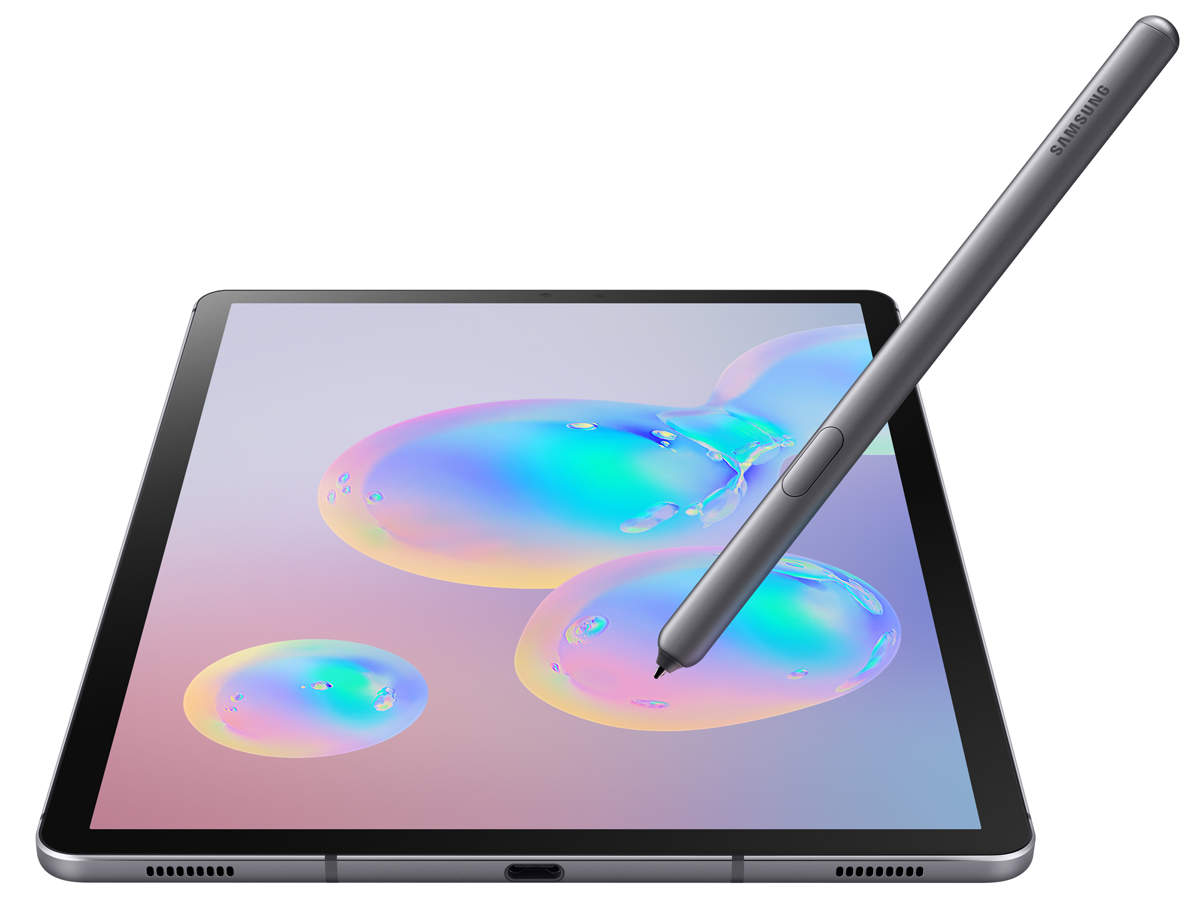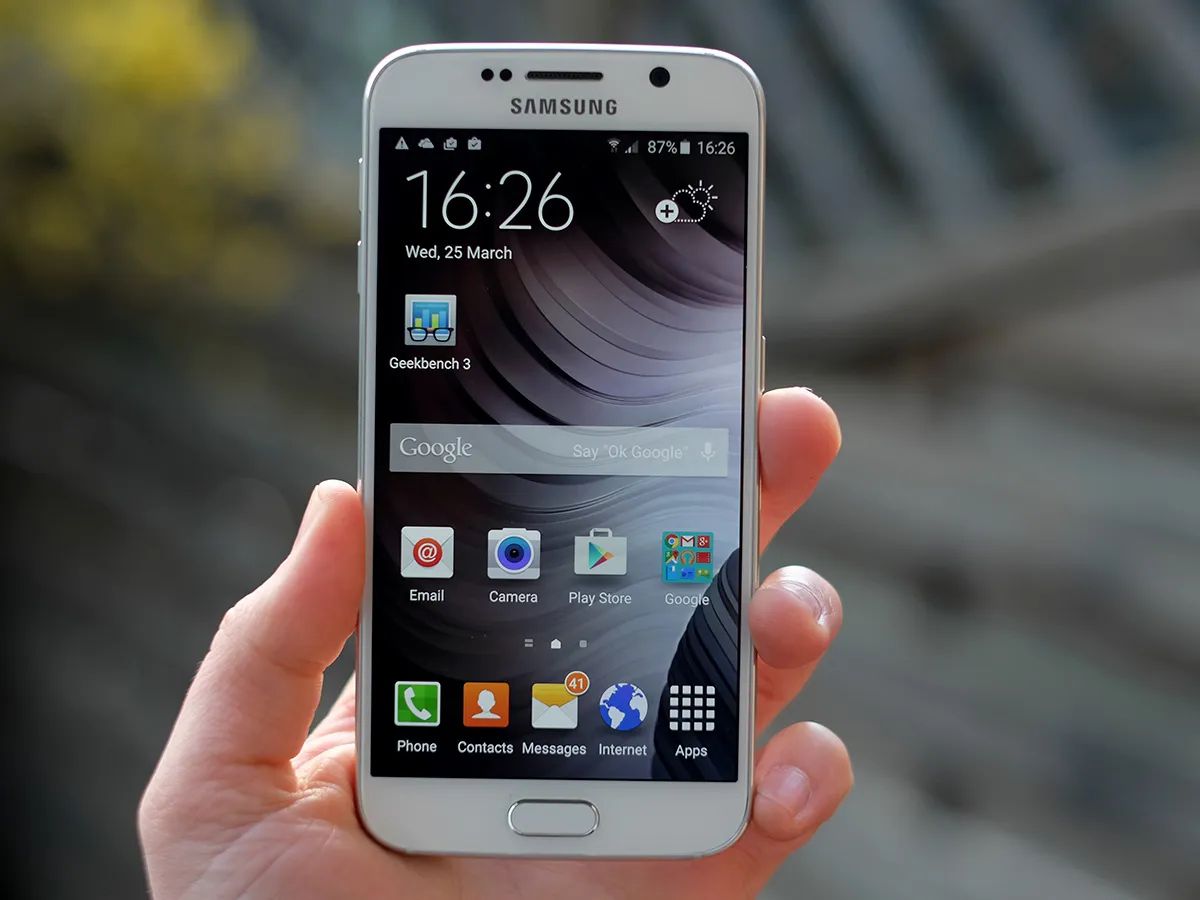Introduction
Welcome to the world of the Samsung Galaxy S6! With its sleek design, powerful features, and user-friendly interface, the Galaxy S6 is a top choice for smartphone enthusiasts. Whether you’re a seasoned tech guru or a novice user, this guide will help you navigate through the various functions and features of the device.
The Galaxy S6 offers an impressive array of capabilities that make it stand out in the crowded smartphone market. From its stunning display to its high-performance camera and advanced security features, this device is sure to meet all your mobile needs.
One of the first things you’ll notice about the Galaxy S6 is its sleek and stylish design. The device features a slim profile with a premium metal and glass construction, giving it a premium look and feel. Its 5.1-inch Quad HD Super AMOLED display offers vibrant colors, sharp images, and excellent viewing angles, providing an immersive visual experience.
Underneath its elegant exterior, the Galaxy S6 packs a powerful punch. It is powered by a quad-core processor and comes with ample RAM, ensuring smooth performance and seamless multitasking. Whether you’re browsing the web, playing games, or running multiple apps simultaneously, you can expect a lag-free experience.
The Galaxy S6 also boasts an advanced camera system that allows you to capture stunning photos and videos. With its 16-megapixel rear camera and optical image stabilization, you can take clear and detailed shots even in low-light conditions. The device also features a 5-megapixel front camera, perfect for capturing selfies or making video calls.
In addition to its impressive hardware, the Galaxy S6 runs on the Android operating system, providing access to a vast ecosystem of apps and services. From productivity tools to entertainment apps, you can customize your device with the apps that suit your needs.
Throughout this guide, we will explore the various features and functions of the Samsung Galaxy S6. We will cover everything from powering on and off the device to setting up and managing apps, making and receiving calls, taking photos and videos, connecting to Wi-Fi, configuring email and social media accounts, and much more.
So, if you’re ready to make the most out of your Samsung Galaxy S6, let’s dive in and explore all the amazing features and capabilities this device has to offer!
Powering On and Off
Before you can start using your Samsung Galaxy S6, you’ll need to know how to power it on and off. Thankfully, this process is quick and straightforward.
To power on your Galaxy S6, locate the power button on the right side of the device. Press and hold the button for a few seconds until the Samsung logo appears on the screen. Once the device has powered on, you’ll be greeted with the lock screen, ready to use your phone.
Powering off your Galaxy S6 is just as easy. Press and hold the power button until a menu appears on the screen. From there, select “Power off” and confirm your choice. Your device will then shut down, and the screen will go black.
It’s important to note that you can also restart your Galaxy S6 using a similar process. Instead of selecting “Power off” from the menu, choose “Restart.” This is useful if you’re experiencing any issues with your device or if you simply want to refresh it.
Additionally, you can enable the “Emergency mode” on your Galaxy S6, which limits device functionality to conserve battery life during emergencies. To activate this mode, press and hold the power button until the menu appears. Then, select “Emergency mode.” You can exit this mode by pressing the power button and selecting “Turn off Emergency mode.”
Powering on and off your Galaxy S6 is a simple task that allows you to control the device’s functionality and conserve battery life. It’s essential to familiarize yourself with this process to ensure a smooth experience with your smartphone.
In the next section, we will explore how to navigate the user interface of the Samsung Galaxy S6, so stay tuned!
Navigating the User Interface
Once you’ve powered on your Samsung Galaxy S6, it’s time to explore the user interface and familiarize yourself with the various elements and features.
The Galaxy S6 runs on Samsung’s custom user interface called “TouchWiz,” which is built on top of the Android operating system. This interface offers a sleek and user-friendly design that allows for easy navigation and customization.
At the center of the user interface is the home screen, where you’ll find shortcuts to your most-used apps, widgets, and other essential information. To access the home screen, simply press the home button located at the bottom of the device. From there, you can swipe left or right to navigate between different home screen pages.
At the top of the screen, you’ll find the status bar, which displays important information such as your battery life, Wi-Fi connection, and notification icons. To access the notification panel, simply swipe down from the top of the screen. This panel allows you to view and interact with your notifications, adjust settings, and access quick toggles for Wi-Fi, Bluetooth, and more.
To launch an app, you can either tap its icon on the home screen or use the app drawer. The app drawer contains all the apps installed on your Galaxy S6 and can be accessed by tapping the “Apps” icon on the home screen or by swiping up from the bottom of the screen.
Once you’re inside an app, you’ll typically find a navigation bar at the bottom of the screen. This bar may include buttons for navigating back, returning to the home screen, or accessing recent apps. You can also perform gestures like swiping up from the bottom to open the app switcher or swiping from the left to access additional menus and options.
On the home screen, you can customize it by adding widgets, rearranging app icons, and creating folders to organize your apps. To add widgets, simply long-press on an empty area of the home screen and select “Widgets.” From there, you can choose from a variety of widgets to add to your home screen.
Overall, navigating the user interface of the Samsung Galaxy S6 is intuitive and user-friendly. With its smooth transitions, customizable features, and accessibility options, you can personalize your device to suit your preferences and make it your own.
In the next section, we will delve into how to set up and manage apps on your Galaxy S6, so continue reading!
Setting Up and Managing Apps
One of the great advantages of the Samsung Galaxy S6 is the ability to download and use a wide range of apps from the Google Play Store. Whether you’re looking for productivity tools, entertainment apps, social media platforms, or games, the Galaxy S6 has you covered.
Setting up and managing apps on your Galaxy S6 is a straightforward process. To get started, you’ll need to sign in to your Google account. If you don’t have one, you can create a new account directly from your device or use an existing account.
Once you’re signed in, you can access the Google Play Store through the app drawer or by tapping the “Play Store” icon on the home screen. From there, you can search for specific apps using the search bar or browse through different categories and recommendations.
When you find an app you want to download, simply tap on it to view more details and reviews. If you’re satisfied with the app, click the “Install” button to begin the download. Depending on the size of the app and your internet connection, the download process may take a few seconds or several minutes.
After the app has finished downloading, it will automatically install on your Galaxy S6. You can then access the app through the app drawer or by placing a shortcut on the home screen.
To manage your apps, go to the app drawer and long-press on an app’s icon. This will activate the edit mode, allowing you to move, uninstall, or disable apps. You can rearrange the app icons by dragging them to different positions on the home screen or create folders to organize similar apps together.
Additionally, you can enable or disable app notifications by going to the device settings and selecting “Notifications.” From there, you can control which apps send you notifications and customize their appearance and behavior.
It’s worth noting that some apps come pre-installed on the Galaxy S6 and cannot be uninstalled. However, you can disable these apps if you don’t use them to free up storage space and declutter your device.
Setting up and managing apps on your Samsung Galaxy S6 allows you to customize your device with the apps that align with your interests and needs. Whether you’re staying productive, staying entertained, or staying connected, the wide variety of apps available on the Google Play Store ensures that there’s something for everyone.
In the next section, we will explore how to personalize your Galaxy S6 to make it uniquely yours, so keep reading!
Personalizing your Galaxy S6
One of the great features of the Samsung Galaxy S6 is the ability to personalize your device and make it reflect your individual style and preferences. From changing the wallpaper to customizing the theme and adding widgets, there are numerous ways to make your Galaxy S6 uniquely yours.
Let’s start by customizing the wallpaper. To change the wallpaper on your Galaxy S6, long-press on an empty area of the home screen and select “Wallpapers.” From there, you can choose from a variety of pre-installed wallpapers or set your own image from your gallery. You can even set different wallpapers for the home screen and lock screen.
In addition to changing the wallpaper, you can also customize the theme of your Galaxy S6. To do this, go to the device settings and select “Themes.” From there, you can browse through a collection of themes and select the one that suits your taste. Themes change the overall look and feel of your device, including the icons, colors, and system sounds.
Another way to personalize your Galaxy S6 is by adding widgets to the home screen. Widgets are interactive elements that display information or provide quick access to app functions. To add a widget, long-press on an empty area of the home screen and select “Widgets.” You can then choose from a range of widgets, such as a weather widget, calendar widget, or music player widget, and place it on the home screen.
If you want to further customize your device, you can install third-party launcher apps from the Google Play Store. These apps provide additional features and customization options, allowing you to completely transform the look and functionality of your Galaxy S6. Popular launcher apps include Nova Launcher, Action Launcher, and Apex Launcher.
Additionally, you can personalize your device by adding shortcuts and widgets to the lock screen. To do this, go to the device settings and select “Lock screen.” From there, you can choose which shortcuts or widgets to display on the lock screen for easier access to your favorite apps or information.
With the ability to change the wallpaper, customize the theme, add widgets, and install third-party launcher apps, personalizing your Samsung Galaxy S6 is a fun and exciting way to make your device uniquely yours. Experiment with different options to find the combination that suits your style and enhances your user experience.
In the next section, we will explore how to make and receive calls on your Galaxy S6, so keep reading to learn more!
Making and Receiving Calls
The Samsung Galaxy S6 is not only a powerful smartphone, but also a reliable tool for making and receiving calls. With its advanced calling features and intuitive interface, staying connected with your contacts has never been easier.
To make a call on your Galaxy S6, start by opening the Phone app. You can find the app icon either on the home screen or in the app drawer. Once the app is open, you’ll see the dialer screen where you can enter the phone number you want to call. If the contact is already saved in your phonebook, you can simply type the contact’s name, and the device will suggest matching contacts.
After entering the phone number or selecting the contact, tap the green call button to initiate the call. The call interface will appear, showing you the call duration, speaker options, and mute button. During a call, you can also use the keypad to enter additional numbers for automated systems, or use the speakerphone option for hands-free calling.
Receiving calls on your Galaxy S6 is just as simple. When you receive an incoming call, your device will display the caller’s information on the screen, along with options to accept or decline the call. To answer the call, swipe the green answer button to the right. If you’re unable to answer the call, you can reject it by swiping the red decline button to the left.
During a call, you can perform various actions to enhance your calling experience. For example, you can mute the call by tapping the microphone icon, put the call on speakerphone by tapping the speaker icon, or access the dialer by tapping the keypad icon. You can also switch between an ongoing call and a new call by tapping the call waiting icon.
One convenient feature of the Galaxy S6 is the built-in call log, which keeps a record of your incoming, outgoing, and missed calls. You can access the call log by opening the Phone app and navigating to the “Recents” tab. From there, you can view call details, return missed calls, or delete unwanted entries.
In cases where you need to keep your number private, the Galaxy S6 allows you to enable the “Caller ID” or “Hide number” feature. You can find this option in the phone settings, under the “Call” or “Additional Settings” menu. Enabling this feature will prevent your phone number from being displayed to the person you’re calling.
With its user-friendly interface and advanced calling features, the Samsung Galaxy S6 ensures that staying connected with your contacts is hassle-free and efficient. Whether you’re making important business calls or catching up with friends and family, your Galaxy S6 has you covered.
In the next section, we will explore how to send and receive text messages on your Galaxy S6, so stay tuned!
Sending and Receiving Text Messages
The Samsung Galaxy S6 offers a powerful and convenient messaging experience, allowing you to effortlessly send and receive text messages. Whether you’re keeping in touch with friends, family, or colleagues, the device provides several ways to communicate via text.
To send a text message on your Galaxy S6, open the Messages app. You can find the app icon either on the home screen or in the app drawer. Once inside the app, you’ll see a list of your existing conversations or a blank screen if you haven’t started any conversations yet.
To start a new conversation, tap the compose button usually represented by a pencil or pen icon. You can then enter the recipient’s phone number manually or choose a contact from your phonebook. Alternatively, you can select a contact’s name within the Messages app if you’ve messaged them before.
Once you’ve selected the recipient, simply type your message in the text input field at the bottom of the screen. You can also send multimedia messages (MMS) by tapping the attachment icon to attach photos, videos, or other files from your device.
After composing your message, tap the send button to send it to the recipient. The message will be delivered, and you’ll see a confirmation that it has been sent. You can continue the conversation by sending and receiving text messages in the same thread.
When you receive a text message on your Galaxy S6, you’ll receive a notification in the status bar. You can swipe down from the top of the screen to view the notification and preview the message without opening the Messages app. To read the full message, simply tap on the notification, and the Messages app will open with the message displayed.
Within the Messages app, you can manage your conversations by deleting individual messages or entire threads. You can also customize the messaging experience by adjusting settings such as notifications, message sound, and chat bubbles.
One handy feature of the Galaxy S6 is the ability to send and receive texts from your computer or tablet through the Samsung Messages app. By linking your device to your computer, you can seamlessly continue your conversations across multiple devices.
Overall, the Samsung Galaxy S6 provides a seamless and intuitive messaging experience. Whether you’re sending important information or having casual conversations, text messaging on your Galaxy S6 is a convenient and efficient way to communicate with others.
In the next section, we will explore how to manage your contacts on the Galaxy S6, so keep reading!
Managing Contacts
The Samsung Galaxy S6 allows you to easily manage your contacts, ensuring that you have all your important names and numbers organized and accessible. Whether you want to add new contacts, edit existing ones, or sync your contacts across devices, the Galaxy S6 has you covered.
To add a new contact on your Galaxy S6, open the Contacts app. You can find the app icon either on the home screen or in the app drawer. Once inside the app, tap the “+” button to create a new contact. From there, you can enter the contact’s name, phone number, email address, and other relevant information. You can also add a photo to personalize the contact.
If you have contacts stored in other accounts, such as your Google account or social media accounts, you can sync them with your Galaxy S6. To do this, go to the device settings and select “Accounts & sync.” From there, choose the account you want to sync and enable the “Sync Contacts” option. This will ensure that your contacts are up to date and accessible across multiple devices.
To edit an existing contact, open the Contacts app and find the contact you want to edit. Tap on their name to view their details and then tap the edit icon (usually represented by a pencil or pen icon). From there, you can update their information, add additional details, or change their photo.
If you want to organize your contacts, you can create contact groups. Contact groups allow you to categorize your contacts into specific groups, such as friends, family, or work colleagues. To create a contact group, open the Contacts app, go to the group section, and tap the “+” button to create a new group. You can then add contacts to the group by tapping the group’s name and selecting the contacts you want to include.
In addition to managing individual contacts, you can also search for specific contacts using the search bar within the Contacts app. This feature comes in handy when you have a large number of contacts and need to find someone quickly.
Backing up your contacts is important to ensure that you don’t lose them in the event of a device malfunction or accidental deletion. To back up your contacts on the Galaxy S6, you can use Samsung’s cloud service or third-party apps that specialize in contact backup. This way, you can restore your contacts easily, even if you switch to a new device.
The Samsung Galaxy S6 provides a comprehensive set of tools for managing your contacts efficiently. Whether you’re adding new contacts, editing existing ones, syncing across devices, or organizing them into groups, the Galaxy S6 ensures that you’ll always have easy access to your important contacts.
In the next section, we will explore how to connect to Wi-Fi and mobile networks on your Galaxy S6, so keep reading!
Connecting to Wi-Fi and Mobile Networks
The Samsung Galaxy S6 provides a seamless connectivity experience, allowing you to connect to Wi-Fi and mobile networks to stay connected wherever you go. Whether you’re at home, in the office, or on the go, the Galaxy S6 makes it easy to access the internet and enjoy a fast and reliable connection.
To connect to a Wi-Fi network on your Galaxy S6, start by opening the device settings and select “Wi-Fi.” Make sure the Wi-Fi toggle is turned on, and your device will scan for available networks. Once the networks appear, select the one you want to connect to and enter the password if prompted. Once connected, you’ll see the Wi-Fi icon in the status bar, indicating that you’re connected to the network.
To forget a Wi-Fi network, go to the Wi-Fi settings and tap on the network’s name. Then, select “Forget” to remove it from your device. This can be useful if you no longer want your device to automatically connect to a particular network.
In addition to Wi-Fi, the Galaxy S6 allows you to connect to mobile networks for internet access. The device supports various cellular networks, including 3G and 4G LTE. To enable mobile data, go to the device settings, select “Connections,” and tap on “Mobile networks.” From there, you can turn on the “Mobile data” toggle to access the internet using your mobile network provider’s data connection.
If you want to ensure that your device automatically connects to the strongest available network, you can enable the “Smart Network Switch” feature. This feature allows your Galaxy S6 to automatically switch between Wi-Fi and mobile data based on signal strength and availability. To enable Smart Network Switch, go to the Wi-Fi settings and tap on the overflow menu (three-dot icon). From there, select “Advanced” and enable the “Smart Network Switch” option.
By default, your Galaxy S6 will automatically connect to known Wi-Fi networks that you’ve connected to in the past. This can be convenient, but it may also connect to networks that are not secure or trusted. To manage these preferred networks, go to the Wi-Fi settings and tap on the overflow menu. From there, select “Saved networks” to view and manage your list of trusted Wi-Fi networks.
Connecting to Wi-Fi and mobile networks on the Samsung Galaxy S6 is a straightforward process that ensures you can access the internet and stay connected wherever you are. Whether you’re browsing the web, streaming videos, or using apps that require an internet connection, the Galaxy S6 provides a reliable and fast connection experience.
In the next section, we will explore how to use the internet on your Galaxy S6, so continue reading to learn more!
Using the Internet
The Samsung Galaxy S6 offers a seamless internet browsing experience, allowing you to surf the web, access online content, and stay connected with the world. With its powerful hardware and advanced internet capabilities, the Galaxy S6 ensures that you can enjoy a fast and smooth internet experience.
To browse the internet on your Galaxy S6, open the web browser app. By default, the Galaxy S6 comes with the Google Chrome browser pre-installed, which provides a secure and feature-rich browsing experience. You can find the browser app either on the home screen or in the app drawer.
Once the browser app is open, you can enter a website URL or search for specific topics using the search bar at the top of the screen. The browser will then load the webpage and display it on the device’s vibrant and sharp display. You can navigate through the webpage by scrolling up and down, zooming in and out, and tapping on links to open new pages.
The Galaxy S6 supports multiple tabs, allowing you to open and switch between multiple webpages simultaneously. To open a new tab, tap on the tab icon usually represented by a square or a number at the top of the screen. From there, you can enter a new URL or search for additional content without leaving your current page.
Another useful feature of the Galaxy S6’s web browser is the ability to save bookmarks. If you come across a webpage that you want to revisit later, you can bookmark it by tapping on the bookmark icon in the browser’s menu. You can then access your bookmarks by tapping on the bookmark icon again and selecting the saved webpage.
In addition to browsing webpages, the Galaxy S6 allows you to access various online services and apps. You can download apps from the Google Play Store to enhance your internet experience, such as social media apps, news apps, or productivity tools.
It’s important to note that while browsing the internet on your Galaxy S6, you should exercise caution and be aware of potential security threats. Ensure that the websites you visit are secure and trustworthy, and avoid entering sensitive information on unsecured websites. You can also enable “Safe Browsing” in the browser settings to protect against malicious websites and phishing attempts.
The Samsung Galaxy S6 provides a powerful and user-friendly internet browsing experience. With its robust browser, multiple tab support, bookmarking feature, and access to online services, the Galaxy S6 ensures that you can enjoy a seamless and enjoyable internet experience on your smartphone.
In the next section, we will explore how to take photos and videos with your Galaxy S6, so keep reading!
Taking Photos and Videos
The Samsung Galaxy S6 is equipped with a high-quality camera that allows you to capture stunning photos and videos on the go. Whether you’re capturing special moments with friends and family or exploring your creative side, the Galaxy S6 provides a versatile and user-friendly photography experience.
To take a photo with your Galaxy S6, open the Camera app. You can find the app icon either on the home screen or in the app drawer. Once the app is open, you’ll see the camera interface, which includes the viewfinder, capture button, and various camera modes and settings.
To focus on a specific subject, simply tap on the screen. The camera will automatically adjust the focus and exposure to ensure a clear and well-exposed photo. You can also manually adjust the focus and exposure by tapping and holding on the screen until the focus and exposure controls appear. From there, you can drag your finger up or down to adjust the settings accordingly.
In addition to capturing photos, the Galaxy S6 allows you to record high-quality videos. To switch to video mode, simply swipe to the right on the camera interface. From there, you’ll see the video recording interface, which includes the record button, settings, and other options. Tap the record button to start recording, and tap it again to stop. You can also capture photos while recording a video by tapping the shutter button during the recording.
The Galaxy S6 offers various camera modes and settings to enhance your photography experience. You can access these modes and settings by swiping to the left on the camera interface. Some popular modes include Pro mode, which allows manual control over settings like ISO and shutter speed, and Panorama mode, which lets you capture wide-angle scenic shots by panning the camera.
After capturing your photos and videos, you can view and manage them in the Gallery app. The Gallery app gives you access to your entire collection of photos and videos, allowing you to organize them into albums, edit them, and share them with others. You can also connect your Galaxy S6 to your computer to transfer and backup your media files.
It’s worth noting that the Galaxy S6 has a front-facing camera as well, perfect for capturing selfies or making video calls. To switch to the front camera, tap the camera icon with the two arrows on the camera interface.
The Samsung Galaxy S6 provides a powerful and versatile camera that allows you to capture beautiful photos and videos. Whether you’re a photography enthusiast or simply enjoy documenting your life’s moments, the Galaxy S6 ensures that you can preserve and share your memories with ease.
In the next section, we will explore how to manage your gallery and multimedia files on your Galaxy S6, so keep reading!
Managing Gallery and Multimedia
The Samsung Galaxy S6 provides a feature-rich Gallery app that allows you to efficiently manage your multimedia files, including photos, videos, and other media. Whether you’re organizing your files, editing your photos and videos, or sharing them with others, the Gallery app on the Galaxy S6 offers a seamless and intuitive media management experience.
When you open the Gallery app on your Galaxy S6, you’ll see all your photos and videos organized in a grid or timeline view. You can scroll through your media files to find the ones you want to view or edit. Tap on a photo or video to open it in fullscreen mode.
To organize your files, you can create albums within the Gallery app. Albums allow you to categorize your photos and videos based on themes, events, or any other preference. To create a new album, open the Gallery app and tap on the overflow menu (usually represented by three dots) in the top-right corner. From there, select “Create album” and give it a name. You can then add photos and videos to the album by selecting the files and choosing the album you want to add them to.
In addition to creating albums, the Galaxy S6 allows you to edit your photos and videos directly within the Gallery app. You can crop, adjust colors, apply filters, and make various other enhancements to your images. For videos, you can trim and merge clips, add music or voiceovers, and apply special effects. These editing features enable you to fine-tune your multimedia files without the need for additional editing apps.
Once you’re satisfied with your edited photos and videos, you can easily share them with others. The Galaxy S6 provides multiple sharing options, including sending files via email or messaging apps, uploading them to social media platforms, or transferring them wirelessly to another device. You simply need to select the file you want to share, tap on the share button, and choose your preferred sharing method.
In addition to photos and videos, the Gallery app on the Galaxy S6 supports various other media formats, such as music and documents. You can use the app to browse, play, and manage your music files, as well as view and organize your documents.
Managing your gallery and multimedia files on the Samsung Galaxy S6 is a breeze, thanks to the powerful and user-friendly Gallery app. With its organizing capabilities, editing tools, and versatile sharing options, the Gallery app ensures that you can effectively manage and showcase your media collection.
In the next section, we will explore how to use the music player on your Galaxy S6, so keep reading to learn more!
Using the Music Player
The Samsung Galaxy S6 boasts a powerful music player that allows you to enjoy your favorite tunes on the go. With its intuitive interface and robust features, the music player on the Galaxy S6 offers an immersive audio experience and puts your music library at your fingertips.
To access the music player on your Galaxy S6, open the Music app. You can find the app icon either on the home screen or in the app drawer. Once inside the app, you’ll see your music library, organized by albums, artists, genres, and playlists.
To play a song, simply tap on its title or album cover. The music player interface will appear, displaying album artwork, playback controls, and song information. You can control the playback by tapping the play/pause button, skipping to the next or previous track, or adjusting the volume using the on-screen controls or the physical volume buttons on the device.
The Galaxy S6 offers various playback options and features to enhance your music listening experience. For example, you can create playlists to organize your favorite songs or set songs as ringtones or alarms. You can also enable in-app sound enhancements, such as equalizer settings and audio effects, to adjust the sound output based on your preferences.
Another useful feature of the music player is the ability to create custom playlists. To create a playlist, open the Music app and go to the “Playlists” section. From there, tap on the “+” button to create a new playlist and give it a name. You can then manually add songs to the playlist by selecting them from your library.
The music player on the Galaxy S6 also supports various audio formats, including MP3, AAC, FLAC, and more. This allows you to enjoy high-quality audio files and ensures compatibility with a wide range of music sources and downloads.
In addition to playing local music files, the Galaxy S6 provides access to various music streaming services. You can download and install apps like Spotify, Apple Music, or Google Play Music to stream and discover music directly from your device.
Furthermore, you can connect your Galaxy S6 to external audio devices using Bluetooth or a headphone jack for an enhanced audio experience. This allows you to play music wirelessly through Bluetooth speakers or listen privately through headphones.
With its user-friendly interface, powerful features, and compatibility with various audio formats, the music player on the Samsung Galaxy S6 offers a rich and enjoyable experience. Whether you’re listening to your favorite album, creating playlists, or exploring new music, the music player ensures that you can always have your favorite tunes accompany you wherever you go.
In the next section, we will explore how to configure email and social media accounts on your Galaxy S6, so keep reading!
Configuring Email and Social Media Accounts
The Samsung Galaxy S6 allows you to easily configure and access your email and social media accounts, keeping you connected and up to date with the latest messages, updates, and notifications. Whether you’re a frequent email user or a social media enthusiast, the Galaxy S6 offers a seamless and convenient experience for managing these accounts.
To configure your email account on the Galaxy S6, start by opening the Email app. You can find the app icon either on the home screen or in the app drawer. Once inside the app, follow the prompts to add a new email account. The Email app supports a wide range of email providers, including Gmail, Yahoo, Outlook, and more. Simply enter your email address and password, and the app will automatically configure the necessary settings for you.
After adding your email accounts, you can access and manage them from the Email app. You can compose new emails, read and reply to incoming messages, and organize your inbox into folders. The Email app also allows you to customize your email settings, such as sync frequency, notifications, and signature.
In addition to email, the Samsung Galaxy S6 provides seamless integration with popular social media platforms, including Facebook, Twitter, Instagram, and more. To configure your social media accounts, open the respective app on your device or download it from the Google Play Store.
When configuring a social media app, you’ll usually be prompted to enter your login credentials or create a new account. Once logged in, you can customize your account settings, manage your profile, and interact with your friends and followers. The social media apps on the Galaxy S6 offer a range of features, including posting updates, sharing photos and videos, commenting on posts, and sending private messages.
With the Galaxy S6, you can also enable notifications for your email and social media accounts. This ensures that you receive real-time updates and stay informed about new messages, activity, and important events. You can configure notification settings for each app individually, allowing you to personalize your notification preferences based on your needs.
It’s worth noting that the Galaxy S6 allows you to add multiple email and social media accounts, enabling you to manage all your accounts in one place. To add additional accounts, simply follow the same process as described above for each account you want to configure.
Configuring email and social media accounts on the Samsung Galaxy S6 is a seamless and straightforward process. With its robust email and social media apps, the Galaxy S6 ensures that you can easily access, manage, and stay connected with your accounts, keeping you in touch with your digital world.
In the next section, we will explore how to manage notifications on your Galaxy S6, so keep reading!
Managing Notifications
The Samsung Galaxy S6 offers a comprehensive notification system that allows you to stay informed and in control of your device’s alerts and notifications. With its customizable settings and intuitive interface, managing notifications on the Galaxy S6 ensures that you receive important updates while minimizing distractions.
To access the notification panel on your Galaxy S6, swipe down from the top of the screen with one finger. This will reveal the notification shade, which displays your most recent notifications. You can swipe up on the shade to expand it and view all your notifications.
Within the notification panel, you’ll see your notifications grouped by app. You can swipe left or right on each app’s notification group to dismiss individual notifications, or tap on the group to expand it and view more details. To clear all notifications, swipe them to the side or tap the “Clear all” button at the bottom of the panel.
If you want to prioritize certain notifications, you can use the notification settings on your Galaxy S6. To access these settings, swipe down from the top of the screen with two fingers, or swipe down with one finger and then swipe down again on the settings shortcut panel. From there, tap the gear icon to open the device settings, and select “Notifications.”
In the notifications settings, you can customize how your device handles notifications for each app. You can choose to allow or block notifications, set notification tones and vibration patterns, and even set certain notifications to appear as pop-up messages. You can also prioritize notifications from specific contacts or apps, ensuring that you never miss important messages or updates.
Furthermore, you can manage app-specific notifications directly from the app settings. To do this, open the app settings for the desired app, and look for the “Notifications” section. From there, you can customize notification settings specific to that app, such as choosing whether to show or hide sensitive content, enabling or disabling sound alerts, or setting badges or notification icons.
If you find that certain notifications are still interrupting you or causing distractions, you can enable “Do Not Disturb” mode on your Galaxy S6. This mode allows you to silence notifications and limit interruptions based on your preferences and schedule. You can access and configure Do Not Disturb mode in the device settings, under the “Sounds and vibration” or “Do Not Disturb” section.
Managing notifications on the Samsung Galaxy S6 ensures that you can stay on top of important alerts and updates while maintaining control over your device’s interruptions. By customizing notification settings and utilizing features like Do Not Disturb mode, you can create a personalized notification experience that suits your needs.
In the next section, we will explore how to customize settings on your Galaxy S6, so keep reading!
Customizing Settings
The Samsung Galaxy S6 offers a wide range of customizable settings, allowing you to personalize your device and optimize its functionalities to suit your preferences and needs. From adjusting display settings to tweaking sound options, customizing settings on the Galaxy S6 ensures that your device is tailored to your liking.
To access the device settings on your Galaxy S6, swipe down from the top of the screen with one finger, or swipe down with two fingers to directly access the settings shortcut panel. From there, tap the gear icon to open the settings menu.
Within the settings menu, you’ll find a variety of options and categories that you can customize. Let’s explore some of the key settings that you can modify on your Galaxy S6:
– Display: In the Display settings, you can adjust the screen brightness, enable or disable automatic brightness, customize the screen timeout duration, and even change the screen resolution and font size.
– Sound and vibration: Under Sound and vibration settings, you can adjust the ringtone volume, notification sound, and vibration intensity. You can also customize sound profiles, enable or disable vibrate on touch, and manage other audio-related settings.
– Wallpaper and themes: The Wallpaper and themes settings allow you to change the device’s wallpaper, apply custom themes to change the appearance of the user interface, and even customize the icons and system sounds.
– Lock screen and security: In the Lock screen and security settings, you can customize your lock screen settings, such as choosing the lock screen type, enabling security features like fingerprint or facial recognition, and managing notifications on the lock screen.
– Accessibility: The Accessibility settings offer various options to customize your device’s accessibility features. You can enable features like talkback for visually impaired users, adjust font and display settings for improved visibility, and manage other accessibility-related options.
– Backup and reset: Under Backup and reset settings, you can configure automatic backups of your device’s data, including app data, settings, and other personal information. You can also perform factory resets or restore backups from your Google account.
These are just a few examples of the settings you can customize on your Samsung Galaxy S6. The device offers a comprehensive range of options that allow you to personalize your experience and optimize your device’s performance to meet your specific requirements.
By exploring and customizing settings on your Galaxy S6, you can enhance your user experience and truly make your device your own.
In the next section, we will explore security and privacy settings on the Samsung Galaxy S6, so keep reading!
Security and Privacy Settings
The Samsung Galaxy S6 offers a range of security and privacy settings to help protect your device and personal information. By customizing these settings, you can ensure that your data is secure, control app permissions, and manage privacy preferences according to your needs and preferences.
To access security and privacy settings on your Galaxy S6, open the device settings and look for the “Security” or “Privacy” section. From there, you’ll find various options to customize and enhance the security and privacy of your device.
Let’s explore some key security and privacy settings available on the Galaxy S6:
– Screen lock: The Screen lock settings allow you to set up a secure unlocking method for your device, such as PIN, password, pattern, or biometric options like fingerprint or facial recognition. Choose a lock method that suits your preference and ensure that you enable a lock screen protection to prevent unauthorized access to your device.
– App permissions: Under the App permissions settings, you can manage the permissions granted to individual apps on your Galaxy S6. You can control which apps have access to specific features or data on your device, such as camera, microphone, contacts, or location. Review and adjust app permissions to ensure that your data is shared only with apps you trust.
– Device encryption: The Galaxy S6 offers the ability to encrypt your device’s storage, adding an extra layer of protection to your data. When enabled, your data will be encrypted and can only be accessed with the device’s lock screen credentials. This ensures that your personal information remains secure if your device falls into the wrong hands.
– Google Play Protect: Google Play Protect is a built-in security feature that continuously scans apps installed on your device for potential threats. You can enable or disable this feature in the Google Play Store settings to ensure that your apps are regularly scanned for malware and other security risks.
– Privacy settings: The Privacy settings on the Galaxy S6 allow you to manage your device’s privacy preferences. Here, you can control how apps use your data, manage app permissions for data usage, and review privacy settings for specific apps. You can also enable the “Do Not Track” feature to request websites not to track your browsing behavior.
– Secure folder: The Secure folder feature on the Galaxy S6 provides an additional layer of security for specific apps, photos, files, and other data. You can create a secure folder with its separate lock, allowing you to store sensitive information securely away from prying eyes.
By configuring the security and privacy settings on your Samsung Galaxy S6, you can ensure that your device and personal information are protected. Customizing these settings empowers you to take control of your data, manage app permissions, and enhance the overall security and privacy of your device.
In the next section, we will explore troubleshooting tips and tricks for the Samsung Galaxy S6, so keep reading!
Troubleshooting and Tips
The Samsung Galaxy S6 is a powerful device, but like any other electronic device, it may encounter issues from time to time. In this section, we will explore some troubleshooting tips and tricks to help you resolve common problems and make the most out of your Galaxy S6.
If you’re experiencing sluggish performance or apps freezing, a simple restart can often solve the issue. Press and hold the power button until the Power options menu appears, then select “Restart” to reboot your device.
If you’re encountering frequent app crashes, consider clearing the app’s cache. Go to the device settings, select “Apps,” and choose the app in question. From there, tap on “Storage” and then “Clear cache.” This will remove temporary data that may be causing the app to behave erratically.
In case your Galaxy S6 is running low on storage, you can free up space by removing unnecessary files and apps. Use the device’s built-in storage management tools or download a third-party file manager app to easily identify and remove large files or unused apps.
If your device’s battery life is draining quickly, it can be helpful to check for apps that may be consuming excessive power. Go to the device settings, select “Battery,” and review the battery usage. Disable or limit background activity for apps that are using excessive power.
If you’re facing Wi-Fi or mobile network connectivity issues, try resetting your network settings. Go to the device settings, select “General management,” and tap on “Reset.” From there, choose “Reset network settings” and confirm your action. Note that this will remove saved Wi-Fi networks and Bluetooth pairings, so you’ll need to set them up again.
If your Galaxy S6 is not receiving software updates, make sure that you have a stable internet connection and sufficient storage space available. Go to the device settings, select “Software update,” and tap on “Download and install” to check for the latest software updates.
If your device is performing unusually slow or experiencing frequent issues, a factory reset can help resolve persistent problems. However, note that this will erase all data on your device, so make sure to back up your important files and contacts before proceeding.
Optimizing your device’s performance can also be achieved by disabling unnecessary animations and visual effects. Go to the device settings, select “About phone,” and tap on “Software information.” From there, tap on “Build number” seven times to enable developer options. Go back to the settings menu, select “Developer options,” and disable or reduce animation scales and transition effects.
Lastly, to keep your Galaxy S6 running smoothly, make sure to keep the device’s software and apps up to date. Check for updates regularly in the device settings and update your apps through the Google Play Store to access bug fixes and new features.
These are just a few troubleshooting tips and tricks for the Samsung Galaxy S6. If you encounter more specific or complex issues, consult the device’s user manual or visit the Samsung support website for further guidance and assistance.
By following these troubleshooting tips and tricks, you can resolve common problems and optimize the performance of your Samsung Galaxy S6, ensuring a seamless and enjoyable user experience.









